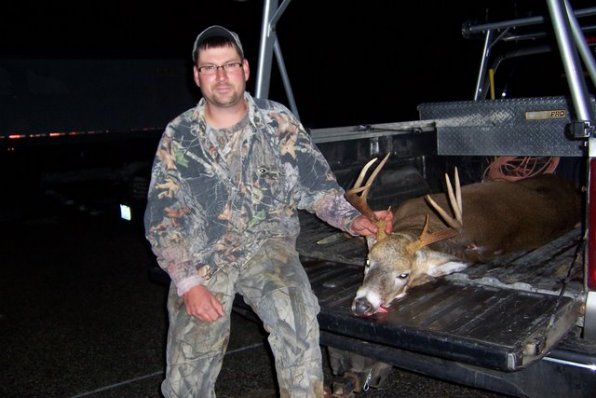Some people think that the buck deer has horns, but that is not true. Buck deer do not have horns. They have antlers. And there is a big difference. Horns will continually grow and remain on an animal throughout its life, such as in bison, sheep, cattle and goats. But new antlers will grow on a deer in the spring and fall off in winter.
During their first year of life, the yearling bucks will start developing antlers, which may be nothing more than button knobs or spikes. The new set of antlers developed each year will keep getting larger until the deer matures at 5-to-7 years of age. Contrary to a popular myth, the number of points on a buck's rack does not indicate its age.
When the antlers start to grow each spring, they are covered with a fuzzy skin known as velvet. This is when the antlers are delicate and sensitive to touch. For thousands of years, the velvet from the antlers of bucks has been used for medical purposes in Asia. It is believed that the hormones extracted from buck velvet can accelerate healing, strengthen the immune system, increase energy levels and lower blood pressure.
In late summer, the velvet becomes dry and falls off, aided by the buck rubbing his antlers on saplings and trees. By autumn, the antlers become hard polished bone with sharp tines that the buck uses to fight rival bucks for dominance in the herd. In winter, the antlers will drop off, and in the spring, a new set of head gear will begin to emerge.
Antler growth demands a lot of minerals and is greatly influenced by the deer's diet. Known to grow an inch per day during periods of peak development, antlers are the fastest growing tissue in the animal kingdom. According to research, a buck can borrow calcium from bones in other parts of his body to be used in growing the antlers. After being shed, the antlers are often eaten by rodents because of their high calcium content.
Hunting for shed antlers has become a popular hobby and has spawned its own traditions and record book. Dogs have even been trained to help find cast-off antlers.
As of Nov. 26, Brad Marshall has reported that 75 deer have been checked in at the New Hampshire deer registration station in his Marshall Firearms Store of Boscawen, and Dave Simons of the Speedway Convenience Store of Loudon has reported that 316 deer have been checked in at his station. The largest deer on Marshall's list is 217 pounds taken by Kerry LaValley of Penacook, and on Simons's list the biggest deer is 222 pounds taken by Jeffrey Breau of Pembroke. This was Breau's largest and only deer he has brought out of the woods in New Hampshire. The last day for hunting antlered deer with firearms in most of the Wildlife Management Units in our state will be Dec. 4.
Our white-tailed deer are admired for their beauty and gracefulness. They can run at 40 miles per hour and can jump over a seven-foot fence. But do not let anyone tell you that the buck deer has horns.




















